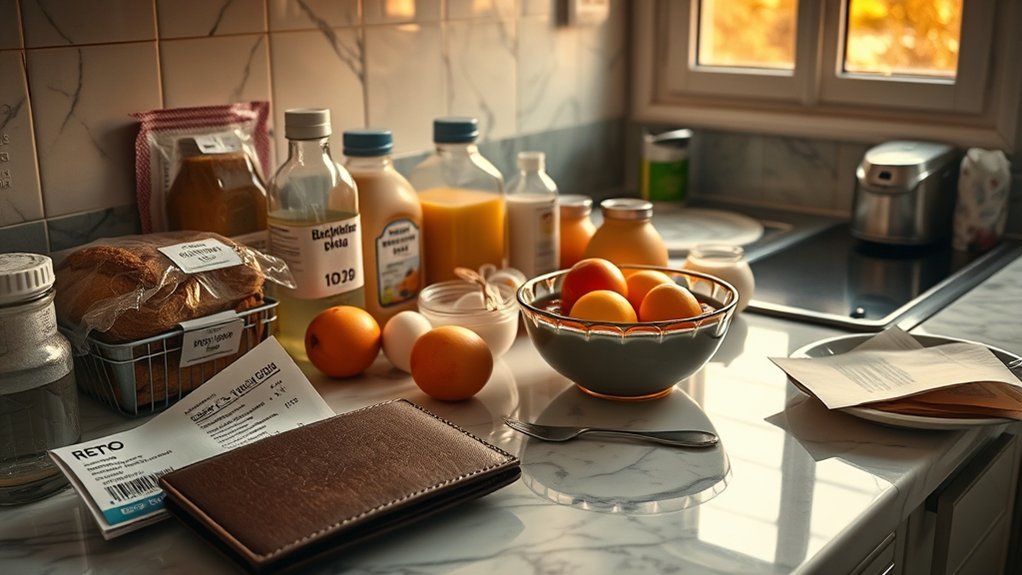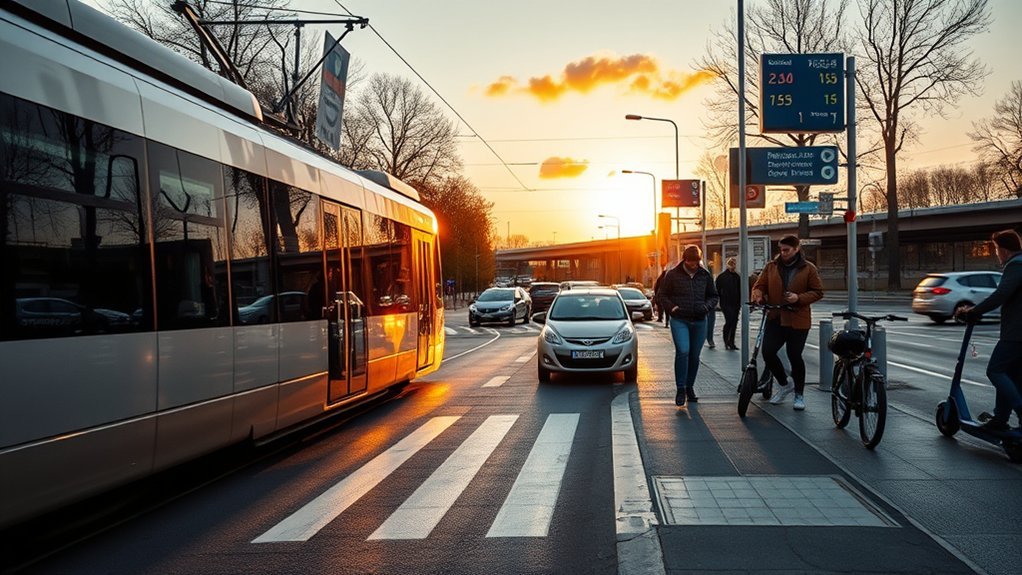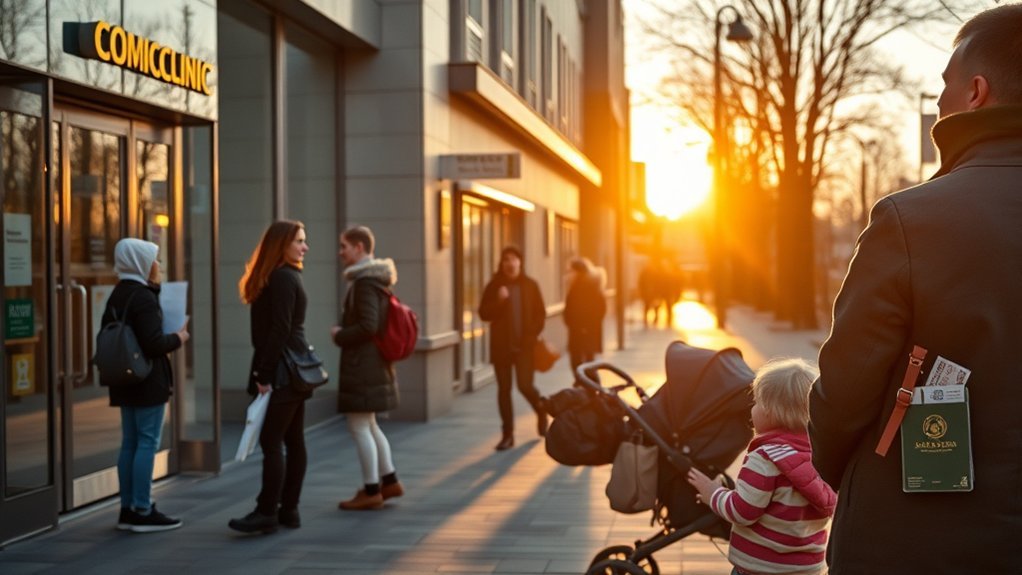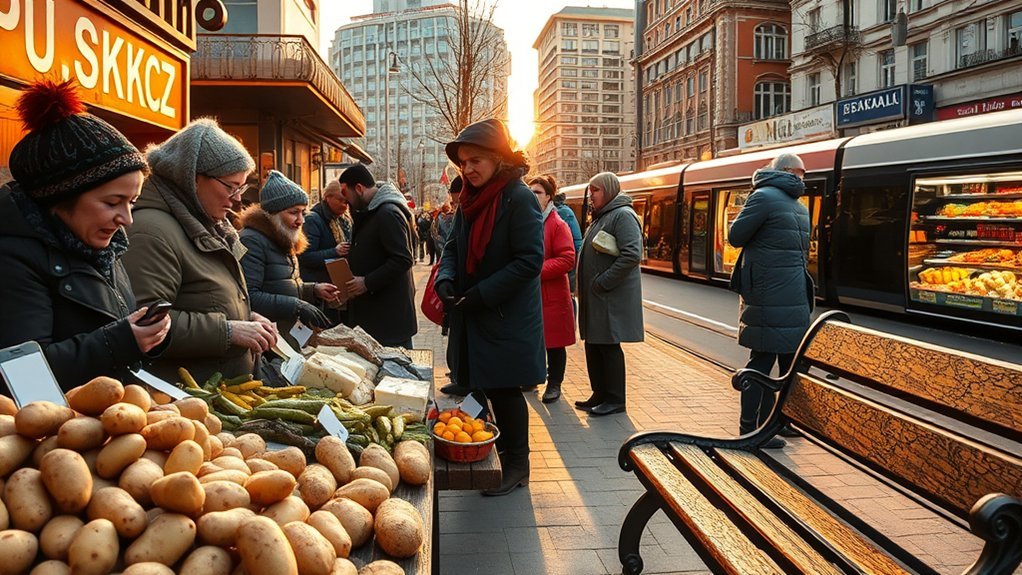Living in Russia can be much cheaper than in Western countries, but costs vary by city and region. You’ll pay notably more in Moscow or resource-rich oblasts than in smaller regions; rent for a central three‑bed in Moscow can top 230,000 RUB while outskirts and smaller cities are far lower. Groceries, transit and utilities are generally inexpensive, though private healthcare and mortgages can be costly. Keep going to see detailed city comparisons, housing examples, and expense breakdowns.
What Is the Current State of Russia’s Economy and Its Impact on Living Costs

Although Russia ranks fourth worldwide by GDP (PPP), its economy shows stark regional imbalances that directly shape living costs: Tyumen Oblast posts a GRDP per capita of 3,637,117 rubles while Ingushetia records just 159,604, and average monthly wages range from about 150,391 rubles in Moscow to 38,931 in Ingushetia, so your purchasing power and expenses vary dramatically by location.
You’ll see cost of living tied to regional output and wages: higher GRDP regions tend to have pricier goods and services but also higher pay. Nationally, monthly living costs excluding rent average 46,769 rubles, with food, transport and utilities dominating budgets.
Sanctions haven’t halted growth—military spending and oil/gas exports to China, India and Türkiye keep revenues flowing—yet inflationary pressures persist, though inflation is forecast to fall from 7.4% in 2024 to 4% by 2026.
That decline should slowly restore real incomes, but regional disparities will continue to determine your real cost of living.
Housing, Utilities, and Rental Prices Across Russian Cities

You’ll see sharp differences in rent across cities — for example, a central three-bedroom in Moscow averages ~230,000 RUB vs ~75,000 RUB on the outskirts, while one-bedrooms in major cities are about 40,000 RUB.
Compare that to property prices (central Moscow ~683,000 RUB/m², outskirts ~321,000 RUB/m²) and rising mortgage rates that can reach 30%, which reshape buying decisions.
Expect monthly utilities and upkeep for an 85 m² apartment to run around 11,600 RUB, so factor recurring costs into any rent-vs-buy calculation.
Rent by City
When comparing cities, rental costs in Russia swing dramatically: a three-bedroom in central Moscow averages about 230,000 RUB versus 75,000 RUB on the outskirts, while per‑square‑meter prices fall from roughly 683,000 RUB in the center to 321,000 RUB outside.
By contrast, one‑bedroom rents in major cities average near $550 (with St. Petersburg starting around 40,000 RUB for a one-room flat).
If you’re evaluating living in Russia, expect Moscow to command a premium across size and location.
St. Petersburg and other regional centers run significantly lower rents, though central locations remain costly.
Your choice of neighborhood typically matters more than city: central versus peripheral positioning can halve monthly rent and roughly double sale price per square meter.
Plan accordingly for income and housing needs.
Utilities and Upkeep
Start by budgeting utilities and upkeep separately from rent: an 85 m² apartment typically adds about 11,600 RUB a month in utilities, and smaller units average roughly $82.77 (for ~65 m²/700 sq ft) — materially lower than U.S. costs — while maintenance, repairs and reserve funds vary by building age and finish; factor these alongside steep mortgage rates (some banks near 30%) and the city/location premium (central Moscow rents and per‑m² prices run roughly two to three times higher than outskirts) to get a realistic total housing cost. You’ll pay about 230,000 RUB for a three‑bed in central Moscow versus 75,000 RUB outside; per‑m² prices follow the same split. Monitor utilities, building reserve funds and expected repairs when comparing offers.
| Item | Center | Outskirts |
|---|---|---|
| Rent (3BR) | 230,000 RUB | 75,000 RUB |
| Price/m² | 683,000 RUB | 321,000 RUB |
| Utilities (85 m²) | 11,600 RUB | 11,600 RUB |
| Avg utilities (700 sq ft) | $82.77 | $82.77 |
| Mortgage rates | up to 30% | up to 30% |
Grocery, Dining Out, and Everyday Household Expenses

You’ll see that basic groceries are relatively inexpensive — in 2025 a liter of milk is about 99 RUB and a loaf of white bread roughly 65 RUB — while monthly food and non‑alcoholic beverage spending averages around 164,766 RUB (~1,840 USD).
Eating out is cheaper too: an inexpensive restaurant meal averages $9.65 in Russia versus $19.45 in the U.S., and supermarket beer ranges from ~86 RUB (domestic) to 179 RUB (imported).
Grocery Price Breakdown
Although grocery and dining costs vary by region, Russia remains noticeably cheaper than the United States across common items: in 2025 a liter of milk is about 99 rubles and a loaf of white bread 65 rubles (roughly $0.63), while rice runs near 128 rubles per kilogram and apples about 146 rubles/kg.
Domestic supermarket beer is ~86 rubles versus 179 rubles for imported bottles, and a basic meal at an inexpensive restaurant averages $9.65—illustrating clear savings on everyday food and dining compared with U.S. prices.
Your grocery price breakdown shows staples and basics cost substantially less, reducing monthly food spend.
Consider these highlights:
- Milk, bread, rice, apples: low unit costs vs. U.S. equivalents.
- Domestic beer: large price gap with imports.
- Inexpensive restaurant meal: affordable convenience.
Eating Out Costs
Moving from grocery basics to everyday eating options, you’ll find Russia offers consistently lower prices for dining out and household food spending than the U.S.
A basic meal with a drink at an inexpensive restaurant runs about $9.65 versus $19.45 in the United States, and fast food combos cost roughly $5.53 compared with $11.12, so eating out is noticeably cheaper.
Grocery staples back this up: a loaf of bread is about $0.63 and a dozen eggs $1.60. Domestic supermarket beer is near $1.70 per pint; imported bottles sell for about $4.79.
Transportation, Fuel, and Mobility Costs

How does getting around in Russia stack up cost-wise? You’ll find transportation costs generally low: single-journey fares run about 75 RUB, a daily pass 365 RUB, and monthly passes near 1,600 RUB (~21.72 USD), much cheaper than in the United States.
Fuel stays affordable too—gasoline averages 60.45 RUB/liter, diesel 70.4 RUB/liter—so driving isn’t as costly as in many Western countries.
- Public transit: frequent, cheap single fares (75 RUB) and economical monthly passes (~1,600 RUB) make daily commuting inexpensive.
- Taxis and short trips: downtown rides of ~5 miles cost about 360 RUB (~4.94 USD), competitive with many global cities.
- Car ownership: new passenger cars average ~3,000,000 RUB; used cars around 2,000,000 RUB—purchase prices are a key long-term expense despite low fuel.
You’ll weigh cheaper operational costs against higher vehicle purchase prices when choosing mobility options.
Healthcare, Education, and Childcare Expenses

While state healthcare and schooling are technically free for residents, you’ll often pay for quality: many people buy private health insurance (running into several thousand euros a year) because public services can be underfunded and disorganized, and expatriates face mandatory medical checks every 3–12 months costing about 3,000–5,000 RUB each. You’ll likely get employer-covered insurance, but if not plan for private premiums. Public education is free, yet instruction is mainly Russian, so non-native children often need paid language support or international schools (€24,990–€43,600/year). For childcare, state kindergartens are available up to age seven; babysitters cost 300–700 RUB/hour and in-home daycare is pricier.
| Service | Typical Cost | Notes |
|---|---|---|
| Private health insurance | Several thousand €/yr | Preferred for timely care |
| Expat medical check | 3,000–5,000 RUB | Every 3–12 months |
| Babysitter/hour | 300–700 RUB | In-home childcare higher |
Compare costs against your salary and employer benefits when budgeting.
How Russia’s Cost of Living Compares Internationally

Curious how far your money will go? You’ll see Russia’s cost of living is substantially lower than in the United States across major categories, offering clear budgetary advantages if you compare expenses directly.
- Housing: A one-bedroom city-center apartment averages $433.96 in Russia versus $1,664.59 in the US — about 3.8× cheaper, so rent dominates savings.
- Food: Restaurant meals and groceries are far less expensive; a basic meal costs $9.65 in Russia vs $19.45 in the US (159% higher in the US), and bread is $0.63 vs $3.56 (164.1% higher).
- Transport: Monthly public transit runs $21.72 in Russia versus $65.85 in the US (122.2% higher), reducing daily commute costs.
Frequently Asked Questions
How Much Is a House in Russia in US Dollars?
A house in Russia costs roughly $5,300–$11,400 per m²: you’ll pay about $11,400/m² in central Moscow, $5,300/m² outside; a three-bedroom rent equivalent implies city-center purchase prices far higher than outskirts.
How Far Does $100 Go in Russia?
Surprisingly, $100 stretches: you’ll buy about 11 cheap restaurant meals, cover roughly 23% of a city‑center one‑bed rent, grab 159 liters of milk, pay nearly a month’s utilities, and afford a transit pass easily.
How Much Money Is Needed to Live in Russia?
You’ll need roughly 130,000–220,000 RUB monthly in Moscow (including rent) and about 50,000–90,000 RUB elsewhere; wages, inflation, and utilities shift this, so budget regionally and expect rising costs from ~7.4% inflation.
How Much Is Rent in Russia in USD?
A one-bedroom in major Russian cities averages about $550; central Moscow three-bedroom rent can reach $2,500. You’ll find outskirts and smaller cities much cheaper, so compare locations to optimize cost and living standards.
Conclusion
Overall, living in Russia is particularly cheaper than Western Europe and North America — think 30–60% lower on average — but costs vary sharply by city. Moscow and St. Petersburg can approach Western prices for housing and dining, while regional cities stay far cheaper. Utilities, groceries, and public transport remain affordable; private healthcare and international schooling raise expenses. In short, your budget flexibility depends on location: choose big-city convenience or regional savings, like picking between two very different price tags.


